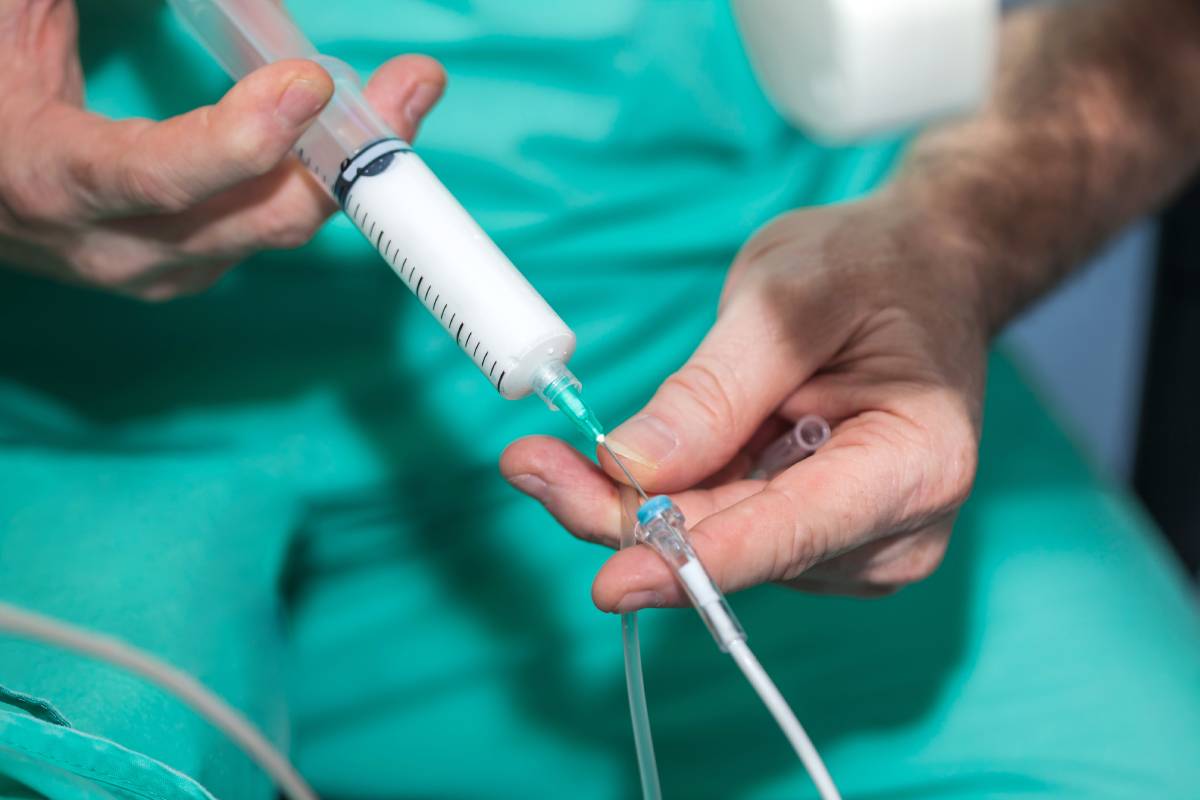Total Intravenous Anesthesia

Total intravenous anesthesia (TIVA) is anesthesia administered entirely through an IV. Though TIVA is considered a form of general anesthesia, it differs from most approaches in that it excludes the use of volatile agents.
TIVA is typically used to induce temporary analgesia and loss of consciousness in the operating room. A trained anesthesiologist is responsible for determining drug selection, concentration, and infusion rates.1,2,3 Studies have suggested that TIVA confers several advantages over the use of other general anesthesia techniques. It is particularly useful in scenarios where stress-free conscious extubation is indicated, as TIVA suppresses airway activity, reducing the frequency of bronchospasm and laryngospasm in children.1,2 TIVA has also been shown to reduce post-operative nausea and vomiting.3 Finally, patients who require wakeup during surgery are significantly less likely to remember the occurrence under TIVA as compared to volatile agents.3 For these reasons and several others, it is the preferred anesthetic approach for a number of specific indications, including:3
- Long QT syndrome
- Malignant hyperthermia risk
- History of severe postoperative nausea/vomiting
- Patients with complicated/compromised airways
- Neurosurgery or surgery requiring neurophysiological monitoring
- “Tubeless” ENT or thoracic surgery
- Cases where neuromuscular blocking is contraindicated: for example, in patients with neuromuscular disorders
Moreover, TIVA eliminates the risk of environmental leakage of volatile anesthetic agents, making anesthesia delivery more efficient as well as safer for those in the operating room.
TIVA can be delivered manually using a pump; however, nowadays, the standard of care utilizes programmed pumps that display and process pharmacokinetic information.2 Such pumps can adjust infusion rates to maintain a certain plasma concentration of anesthetic. This, along with consideration of factors such as age or weight, allows for individualization of dosing. The most frequently used anesthetic cocktail for TIVA is propofol augmented with an opioid, though technically any hypnotic drug could be used in its place.4 Notably, infusions of both propofol and remifentanil have been identified as the “gold standard” of TIVA for achieving appropriate depth of sedation and rapid recovery.3
Despite its advantages, there are some risks to TIVA, mainly related to system failure or miscalculation of infusion rate. TIVA is both technically complex and labor-intensive, which is one of the reasons that anesthesiologists often prefer to incorporate volatile agents. All possible measures must be taken to ensure that anesthetic infusion is maintained at a constant and appropriate rate. For example, it is recommended that only dedicated pharmacokinetic pumps be used, and that these pumps be serviced a minimum of once every twelve months. Great care must be taken when programming the pump with patient information, needle size, and drug type/dilution, as input of incorrect information could lead to either dangerous or inadequate drug concentrations. Special training is required to manage the pharmacokinetic pumps, and this training must be specific to pump brand and model.3
These considerations have historically discouraged anesthesiologists from employing TIVA. However, the trend seems to be reversing. Increasingly, programming and technology replaces the need for human calculation and manual intervention. These improving technologies continue to make TIVA safer and more prevalent as an anesthetic technique.
References
1 Gaynor, J., & Ansermino, J. M. (2016). Paediatric total intravenous anaesthesia. BJA Education, 16(11), 369-373. https://doi.org/10.1093/bjaed/mkw019
2 Lauder, G. R. (2015). Total intravenous anesthesia will supercede inhalational anesthesia in pediatric anesthetic practice. Pediatric Anesthesia, 25(1), 52-64.
3 Al-Rifai, Z., & Mulvey, D. (2016). Principles of total intravenous anaesthesia: practical aspects of using total intravenous anaesthesia. British Journal of Anaesthesia, 16(8), 276-280. https://doi.org/10.1093/bjaed/mkv074
4 Anderson, B. J., & Houghton, J. (2018, February 9). Total intravenous anesthesia and target-controlled infusion. A Practice of Anesthesia for Infants and Children (Sixth Edition). https://www.sciencedirect.com/science/article/pii/B9780323429740000082